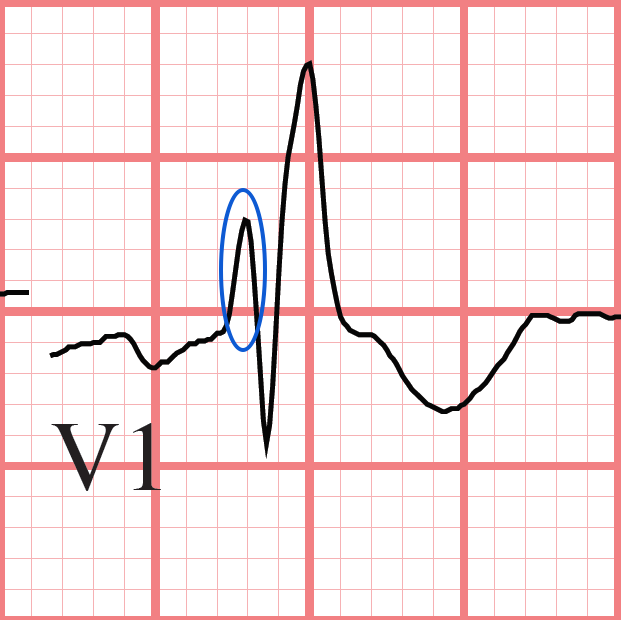Right bundle branch block (RBBB) is not a mirror image of LBBB. Some important differences include:- RBBB is common in normal healthy hearts (LBBB is not)
- RBBB does not cause big changes in the ST segment or the T wave. This is because LV depolarization and repolarization are both normal because the left bundle is conducting normally.
- RBBB therefore does not cause diagnostic interference with infarction, ischemia, or LVH
Let's look at what happens to depolarization and the ECG in RBBB. Remember that the LV will be depolarized first and that LV depolarization will be normal. The septum is the first to depolarize:This will produce an early upgoing R wave in V1/V2 and it might produce a small downgoing (Q wave) in V6:

.png)
Next, the rest of the LV depolarizes, mostly toward V6:
Sumary of diagnostic criteria for RBBB:- QRS > 120 ms
- RSR' configuration in V1/2
- slurred (wide) S wave in V5/6
Exceptions to the rule:- if the patient has had an old anterior infarct with Q waves, then the first R wave in V1/2 might be missing (because the R wave is replaced by a Q wave)
Reference:
1. Surawicz B, Childers R, Deal BJ, Gettes LS. AHA/ACCF/HRS Recommendationsfor the Standardization and Interpretation of the Electrocardiogram. J Am Coll Cardiol 2009;53:976–981.